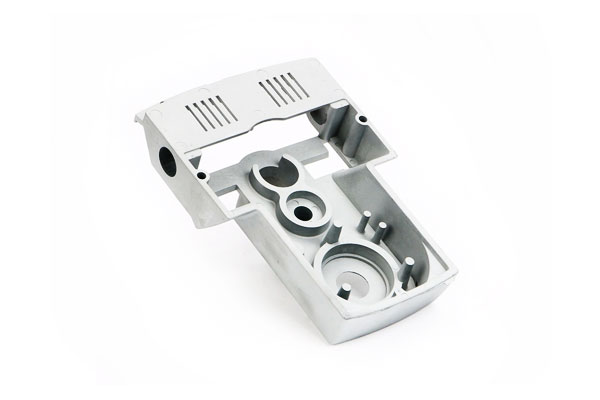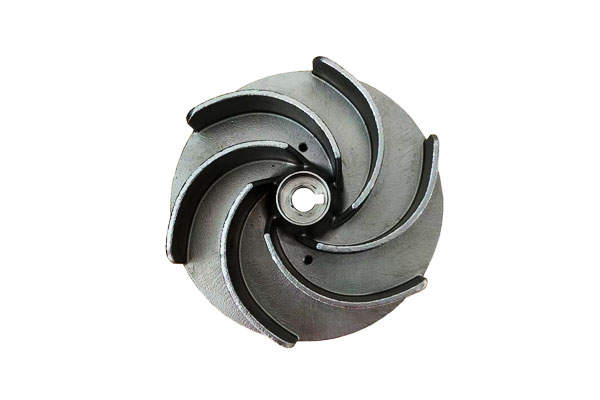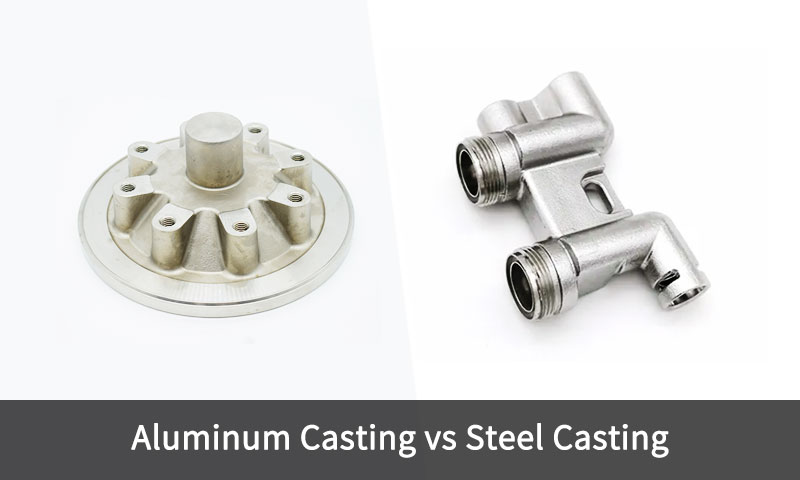1. Uvod
Aluminum vs Steel Casting — choosing between these two foundational materials shapes component performance, cost and manufacturability across industries from automotive to energy.
This comparison is not merely about metal chemistry: it encompasses density and stiffness, toplinsko ponašanje, casting process compatibility, secondary processing (toplotna obrada, inženjerstvo na površini), lifecycle cost and application-specific reliability.
Engineers and purchasers must therefore evaluate the entire system—loading, temperatura, okoliš, production volume and finish requirements—before specifying a metal and casting route.
2. Fundamental Material Differences Between Aluminum vs Steel
At the core of aluminum vs. steel casting lies a fundamental metallurgical and physical contrast that directly affects how each material behaves during casting, obrada, i usluga.
| Vlasništvo | Aluminij (Npr., Al-i talaže) | Čelik (Npr., carbon or low-alloy steels) | Inženjerske implikacije |
| Gustoća (g/cm³) | 2.70 | 7.85 | Aluminum is ~65% lighter, offering major weight savings for transportation and aerospace. |
| Talište (° C) | 615–660 | 1425–1540 | Aluminum’s low melting point enables easier casting and lower energy consumption; steel requires specialized furnaces. |
| Toplinska vodljivost (W/m · k) | 120–180 | 40–60 | Aluminum dissipates heat efficiently—ideal for engines, izmjenjivači topline, i elektronike. |
| Specifična snaga (MPa/ρ) | ~100–150 | ~70–90 | Despite lower absolute strength, aluminum’s strength-to-weight ratio surpasses that of steel. |
| Elastični modul (GPA) | 70 | 200 | Steel is stiffer, providing better rigidity under load and vibration. |
Otpor korozije |
Izvrstan (forms Al₂O₃ layer) | Promjenljiv; prone to rust without coatings | Aluminum resists oxidation naturally, while steel needs surface protection (slika, pozlaćivanje, or alloying with Cr/Ni). |
| Obradivost | Izvrstan | Umjereno do teško | Aluminum’s softness allows easy machining and shorter cycle times; steel requires tougher tooling. |
| Reciklalnost | >90% recoverable | >90% recoverable | Both materials are highly recyclable, though aluminum’s remelting requires less energy (5% of primary production). |
| Casting Shrinkage (%) | 1.3–1.6 | 2.0–2.6 | Steel shrinks more during solidification, demanding larger allowances and more complex gating/feeding systems. |
| Koštati (približno., USD/kg) | 2.0–3.0 | 0.8–1.5 | Aluminum is more expensive per kilogram, but savings in weight and processing can offset total lifecycle costs. |
3. What Is Aluminum Casting?
Aluminij lijevanje is the process of shaping molten aluminum or aluminum alloys into complex, near-net-shape components using molds.
It is one of the most widely used metal casting processes globally—accounting for over 50% of all nonferrous castings—due to aluminum’s excellent castability, niska gustoća, i otpornost na koroziju.

Pregled
In aluminum casting, rastopljeni aluminij (obično između 680–750°C) is poured or injected into a mold cavity where it solidifies into the desired geometry.
Aluminum’s low melting point and high fluidity make it ideal for both mass-production methods (like die casting) i Aplikacije visoke preciznosti (like investment casting).
Key Features of Aluminum Casting
- Lagan i visoka omjer snage i težine:
Aluminum castings offer excellent mechanical performance while being about Jedna trećina težine čelika. - Dobar otpor korozije:
Tanka, samoizlječenje sloj aluminij oksida (Al₂o₃) protects against oxidation and most atmospheric or marine corrosion. - Izvrsna toplinska i električna vodljivost:
Suitable for applications like izmjenjivači topline, kućište, and electric components. - Reciklalnost:
Aluminum can be recycled indefinitely without degradation, reducing production energy by up to 95% compared to primary smelting.
Common Aluminum Casting Processes
| Metoda lijevanja | Opis | Tipične primjene |
| Lijevanje pod pritiskom | High-pressure injection of molten aluminum into steel dies; yields precise, Dijelovi s tankim zidovima. | Automobilski dijelovi (Kućišta zupčanika, zagrada), potrošačka elektronika. |
| Lijevanje pijeska | Molten metal poured into sand molds; suitable for larger, lower-volume parts. | Blokovi motora, razmazi, zrakoplovna kućišta. |
| Investicijski lijev | Ceramic molds from wax patterns; ideal for fine details and tight tolerances. | Aerospace turbine komponente, medicinski uređaji. |
| Trajno lijevanje kalupa | Reusable metal molds; good surface finish and dimensional control. | Klipovi, kotači, i morske komponente. |
| Centrifugalno lijevanje | Uses centrifugal force to distribute molten metal; gust, Struktura bez oštećenja. | Cijevi, rukavi, and rings. |
Prednosti aluminijskog lijevanja
- Lagan: Reduces component weight by 30–50% vs. čelik, improving fuel efficiency (automobilski) or payload capacity (zrakoplovstvo).
- Energetska učinkovitost: Melting aluminum requires 60–70% less energy than steel (570° C vs. 1420° C), lowering processing costs by 20–30%.
- Otpor korozije: Eliminates the need for coatings (Npr., boja, galvanizirajući) U većini okruženja, reducing maintenance costs by 40–50%.
- High-Volume Viability: Die casting enables production of 1000+ parts/day per machine, meeting consumer goods demand.
Disadvantages of Aluminum Casting
- Niža snaga: Zatečna čvrstoća (150–400 MPa) is 50–70% lower than high-strength steel, limiting use in heavy-load applications.
- Poor High-Temperature Performance: Retains only 50% of room-temperature strength at 250°C, making it unsuitable for engine exhaust or power plant components.
- Rizik poroznosti: Die-cast aluminum is prone to gas porosity (from high-pressure injection), restricting heat treatment options (Npr., T6 temper requires vacuum processing).
- Higher Raw Material Cost: Primary aluminum costs $2,500–$3,500/tonne, 2–3x more than carbon steel.
Industrial Applications of Aluminum Casting
Aluminum casting is widely used across multiple industries due to its combination of lagan dizajn, obradivost, i otpornost na koroziju:
- Automobilizam: Blokovi motora, prijenosna kućišta, kotači, and suspension arms.
- Aerospace: Zagrada, strukturni okovi, Kućišta kompresora.
- Elektronika: Topline sudone, Kućišta za motore, kućišta.
- Roba široke potrošnje: Uređaji, električni alati, furniture hardware.
- Marine and Renewable Energy: Propeleri, kućište, i turbinske noževe.
4. What Is Steel Casting?
Steel casting is the process of pouring molten steel into a mold to produce complex, high-strength components that cannot be easily fabricated or forged.
Unlike aluminum, steel has a veća tališta (≈ 1450–1530°C) and greater tensile strength, čineći ga idealnim za load-bearing and high-temperature applications such as machinery, infrastructure, i stvaranje energije.

Pregled
In steel casting, carefully alloyed molten steel is poured into either expendable (pijesak, ulaganje) or permanent molds, where it solidifies into a shape close to the final part.
Because steel shrinks significantly upon cooling, precise temperature control, dizajniranje, and solidification modeling su kritični.
Steel castings are known for their mehanička robusnost, otpor udara, i strukturni integritet, particularly under harsh service conditions.
Key Features of Steel Casting
- Exceptional Strength and Toughness:
Yield strengths often exceed 350 MPA, with heat-treated alloys reaching over 1000 MPA. - High-Temperature Capability:
Retains strength and oxidation resistance up to 600–800°C, depending on composition. - Versatile Alloy Selection:
Includes Ugljični čelici, nisko-legura čelika, nehrđajući čelici, and high-manganese steels, each tailored for specific environments. - Zavarivost i strojnost:
Cast steels can be post-processed effectively—machined, zavarivan, and heat-treated to enhance performance.
Common Steel Casting Processes
| Metoda lijevanja | Opis | Tipične primjene |
| Lijevanje pijeska | Molten steel poured into bonded sand molds; Idealno za velike, složeni dijelovi. | Tijela ventila, pumpa, machinery housings. |
| Investicijski lijev | Ceramic molds formed from wax patterns; yields excellent accuracy and surface finish. | Turbinske lopatice, kirurški alati, zrakoplovni dijelovi. |
| Centrifugalno lijevanje | Rotational force distributes molten steel evenly; produces dense cylindrical components. | Cijevi, obloge, utrka nosača. |
| Lijevanje kalupa | Uses thin resin-coated sand molds; allows higher precision and smoother surfaces. | Mali dijelovi motora, zagrada. |
| Kontinuirano lijevanje | For semi-finished steel products like slabs and billets. | Raw material for rolling and forging. |
Advantages of Steel Casting
- Superiorna snaga & Žilavost: Zatečna čvrstoća (do 1500 MPA) i utjecaj žilavost (40–100 j) make it irreplaceable for structural safety (Npr., Komponente mosta, Automobilska šasija).
- Performanse visoke temperature: Operates reliably at 400–600 ° C (vs. aluminum’s 250°C limit), suitable for jet engine casings and power plant boilers.
- Low Raw Material Cost: Carbon steel costs $800–$1200/tonne, 60–70% less than primary aluminum.
- Nositi otpor: Heat-treated steel (Npr., 4140) has surface hardness up to 500 HB, reducing replacement frequency in abrasive applications by 50–70%.
Disadvantages of Steel Casting
- High Weight: Density 2.7x that of aluminum increases fuel consumption (automobilski) or structural load (zgrade).
- High Energy Use: Melting steel requires 25–30 MWh/tonne (vs. 5–7 MWh/tonne for aluminum), increasing processing costs by 40–50%.
- Osjetljivost na koroziju: Carbon steel rusts in moist environments (stopa korozije: 0.5–1,0 mm/godišnje in salt spray), requiring coatings (Npr., galvanizirajući) that add $1.5–$2.5/kg to costs.
- Poor Machinability: Hardness requires specialized tools, povećanje vremena obrade za 30–50% vs. aluminij.
Industrial Applications of Steel Casting
Steel castings dominate industries demanding jačina, izdržljivost, i otpornost na toplinu:
- Konstrukcija & Rudarstvo: Excavator teeth, drobilijski dijelovi, track links.
- Energija & Stvaranje energije: Steam turbine casings, tijela ventila, nuklearne komponente.
- Ulje & Plin: Drill heads, pipeline valves, razmazi.
- Prijevoz: Train couplers, Kućišta zupčanika, heavy-duty engine blocks.
- Aerospace & Obrana: Podvozje, strukturni okovi, armor components.
5. Sveobuhvatna usporedba: Aluminij naspram čeličnog lijeva
Process fit and part geometry
- Tankog zida, kompleks, Dijelovi velikog volumena: aluminum die casting is optimal (HPDC).
- Velik, težak, load-bearing parts: steel/spheroidal graphite (Vojvode) iron and cast steels via sand casting are preferred.
- Medium volume with high integrity requirements: low-pressure aluminum or investment casting steels depending on strength needs.
Mechanical performance & naknadna obrada
- Toplotna obrada: cast steel can be quenched & tempered to obtain high strength and toughness; aluminum alloys have age-hardening routes but reach lower maximum strengths.
- Surface engineering: aluminum readily anodizes; steel can be nitrided, carburized, induction hardened or coated with hard substances (keramika, tvrdi krom).
Troškovi vozača (typical considerations)
- Material cost per kg: aluminum raw metal tends to be priced higher per kg than ferrous scrap/steel, but part mass reduces required amount.
- Alati: die casting dies are expensive (high initial amortization) but low per-part cost at volumes >10k–100k; sand tooling is cheap but per-part labor higher.
- Obrada: aluminum machines faster (higher removal rates), lower tool wear; steel requires harder tooling and more machining time—raises total cost especially for small batches.
Proizvodnja & defect modes
- Poroznost: HPDC aluminum can develop gas and shrinkage porosity; permanent-mold and low-pressure reduce porosity.
Steel castings can suffer inclusions and segregation; controlled melting and post-HT reduce defects. - Dimenzionalna kontrola: die cast aluminum attains tight tolerances (± 0,1–0,3 mm); sand cast steel tolerances are looser (±0.5–2 mm) without post-machining.
Ekološki & life-cycle
- Recikliranje: both metals are highly recyclable. Recycled aluminum uses a small fraction (~5–10%) of the energy of primary smelting; recycled steel also has large energy savings compared to virgin iron.
- Use-phase: lightweight aluminum can reduce fuel consumption in vehicles — a system-level environmental benefit.
Stol: Aluminum vs Steel Casting — Key Technical Comparison
| Kategorija | Aluminijsko lijevanje | Čelično lijevanje |
| Gustoća (g/cm³) | ~2.70 | ~7.80 |
| Talište (° C / ° F) | 660° C / 1220° F | 1450–1530 ° C / 2640–2790°F |
| Jačina (Zatezanje / Prinos, MPA) | 130–350 / 70–250 (lijevan); do 500 Nakon toplinske obrade | 400–1200 / 250–1000 (Ovisno o ocjeni i toplinskom obradi) |
| Tvrdoća (HB) | 30–120 | 120–400 |
| Elastični modul (GPA) | 70 | 200 |
| Toplinska vodljivost (W/m · k) | 150–230 | 25–60 |
| Električna vodljivost (% IACS) | 35–60 | 3–10 |
| Otpor korozije | Izvrstan (prirodni oksidni sloj) | Variable — requires alloying (CR, U, Mokar) ili premaz |
| Otpornost na oksidaciju (High-Temp) | Ograničen (<250° C) | Dobro do izvrsno (up to 800°C for some alloys) |
| Obradivost | Izvrstan (mekan, easy to cut) | Umjereno do siromašno (tvrđi, abrazivan) |
| Odljenost (Fluidnost & Skupljanje) | Visoka fluidnost, nisko skupljanje | Lower fluidity, higher shrinkage — needs precise gating |
| Prednost na težini | ~65% lighter than steel | Heavy — suitable for structural loads |
Površinska obrada |
Gladak, good detail reproduction | Rougher surfaces; may need machining or shot blasting |
| Heat Treatment Flexibility | Izvrstan (T6, T7 tempers) | Širok (žalost, gašenje, odmrzavanje, normaliziranje) |
| Reciklalnost | >90% recycled efficiently | >90% recyclable but requires higher remelting energy |
| Production Cost | Lower energy, brže vrijeme ciklusa | Higher melting cost and tool wear |
| Tipična tolerancija (mm) | ±0.25 to ±0.5 (kasting); ±1.0 (lijevanje pijeska) | ±0.5–1.5 depending on process |
| Environmental Footprint | Nizak (especially recycled aluminum) | Higher CO₂ and energy footprint due to high melting point |
| Tipične primjene | Automobilski kotači, kućište, zrakoplovni dijelovi, roba široke potrošnje | Ventili, turbine, teški stroj, strukturne komponente |
6. Zaključak
Aluminum and steel castings solve different engineering problems.
Aluminum excels where lagan, toplinska vodljivost, surface quality and high production rates matter.
Čelik (and cast irons) dominate where visoka snaga, ukočenost, nositi otpor, toughness and elevated temperature performance su potrebni.
Good material selection balances functional requirements, koštati (total life cycle), producibility and finishing.
In many modern designs hybrid solutions appear (steel inserts in aluminum castings, clad or bimetallic components) to exploit the strengths of both metals.
Česta pitanja
Što je jače: cast aluminum or cast steel?
Cast steel is significantly stronger—A216 WCB steel has a tensile strength of 485 MPA, 67% higher than A356-T6 aluminum (290 MPA).
Steel also has far greater toughness and wear resistance.
Can cast aluminum replace cast steel?
Only in applications where weight reduction is prioritized over strength (Npr., automotive non-structural parts).
Steel is irreplaceable for high-load, high-temperature components (Npr., turbine).
Which is more corrosion-resistant: cast aluminum or cast steel?
Cast aluminum is more corrosion-resistant in most environments (stopa korozije <0.1 mm/godina) vs. ugljični čelik (0.5–1,0 mm/godišnje).
Stainless steel castings match aluminum’s corrosion resistance but cost 2–3x more.
Which casting process is best for aluminum vs. čelik?
Aluminum is ideal for die casting (veličanstveni) and sand casting (niskobudžetni).
Steel is best for sand casting (veliki dijelovi) i investicijski kasting (kompleks, high-tolerance components). Die casting is rarely used for steel.


